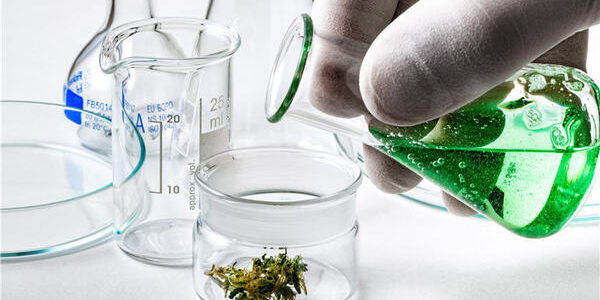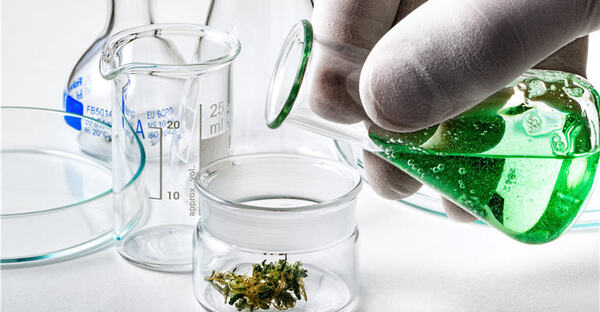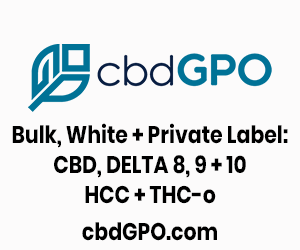The U.S. Cannabis Phobia: Government Researchers Can’t Even STUDY High-Potency Pot
Marijuana Stocks, Finance, & InvestingUncategorized September 12, 2019 MJ Shareholders


Imagine being so phobic toward something that you didn’t even want to look at it.
This captures the attitude of the U.S. federal government toward cannabis. Yet the federal government claims the right to regulate what it won’t even study.
Important U.S. government agencies like the National Institutes of Health (NIH) and Food and Drug Administration (FDA) inform the federal government about cannabis and regulate cannabis consumer products, respectively.
In turn, these agencies rely upon government researchers to provide them with the necessary scientific foundation to produce informed opinions on cannabis and cannabis products. The researchers (currently) are required to do all of their research and testing exclusively from government-provided cannabis.
This is where the whole process descends to the level of a comedy skit. A recent article from Marijuana Moment frames the absurdity here.
That’s a bit of an understatement.
For investors new to cannabis, hemp is the non-psychoactive sub-species of cannabis. It is generally defined as cannabis with near-zero levels of tetrahydrocannabinol (THC), the mildly psychoactive cannabinoid in the cannabis plant. Regulators typically quantify this as THC levels of 0.3% or less.
Then we have the (high potency) cannabis being sold by retailers today, with THC content that can exceed 20%. The potency of cannabis has increased by roughly a factor of ten as a direct result of the War on Drugs.
Cannabis, the only safe narcotic, was the one drug that the DEA was strongly successful in blocking from importation. This is due to both the much greater bulk of cannabis as well as its pungent odor.
With cannabis consumers cut off from imported cannabis, the black market responded, in the tradition of capitalism. The United States (and Canada) began growing its own cannabis.
This meant growing cannabis indoors, to conceal cultivation from law enforcement. It also provided the opportunity to apply hi-tech agricultural processes to cannabis, not to mention more experimentation with genetics.
Increasingly potent strains were cultivated, to maximize the market value of these black market crops with the minimum amount of cultivation space.
In the 1970’s, typical “homegrown” cannabis contained THC levels of 1 – 2% (depending on climate). Imported strains of cannabis ranged slightly higher. In other words, the safe cannabis that our governments are (reluctantly) legalizing today is 10 times as strong as the cannabis they criminalized as – supposedly – a “dangerous drug”.
Yet, living in its own little fantasy world, it’s this weaker cannabis that the U.S. federal government is currently studying, to inform itself about cannabis and to regulate the cannabis industry.
Government researchers are (belatedly) requesting that the federal government provide them with access to cannabis from state-legal shops, to study what is being sold to consumers, for the first time.
It might not help if they are provided with the same cannabis that is actually being sold to Americans. During all of the decades of cannabis Prohibition, none of what we were told about cannabis by these “researchers” was true.
One by one, all of the anti-cannabis myths produced by these pseudo-scientists have been exposed as fiction. Government officials continue to warn about “grave risks” associated with cannabis use when there aren’t any.
Cannabinoids, the active ingredients in the cannabis plant, are produced naturally within the human body. They are essential to human health. Consequently, medicinal cannabis is now being prescribed as a treatment for hundreds of different medical conditions.
Yet in the fantasy world of the U.S. federal government, cannabis remains a Schedule 1 narcotic, deemed to have no known medical uses.
The government now claims it wants to “study” cannabis, to actually learn something about this plant – after decades of Prohibition. Maybe the U.S. government should simply ask the cannabis industry to brief government officials about the cannabis plant and the cannabis products they are producing?
Then, finally, the U.S. government might get its facts straight on cannabis.
MJ Shareholders
MJShareholders.com is the largest dedicated financial network and leading corporate communications firm serving the legal cannabis industry. Our network aims to connect public marijuana companies with these focused cannabis audiences across the US and Canada that are critical for growth: Short and long term cannabis investors Active funding sources Mainstream media Business leaders Cannabis consumers










